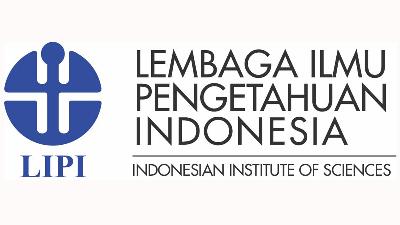Effect Of Distributive Justice And Procedural Justice On Work Engagement
Abstract
Keywords
Full Text:
PDFReferences
Ö. Özer, Ö. Uğurluoğlu, and M. Saygili, “Effect of Organizational Justice on Work Engagement in Healthcare Sector of Turkey,” J. Health Manag., vol. 19, no. 1, pp. 73–83, 2017.
F. Kalay, “The Impact of Organizational Justice on Employee Performance: A Survey in Turkey and Turkish Context,” Int. J. Hum. Resour. Stud., vol. 6, no. 1, p. 1, 2016.
S. Shan, H. M. Ishaq, and M. A. Shaheen, “Impact of organizational justice on job performance in libraries: Mediating role of leader-member exchange relationship,” Libr. Manag., vol. 36, pp. 70–85, 2015.
R. Cropanzano, C. A. Prehar, and P. Y. Chen, “Using social exchange theory to distinguish procedural from interactional justice,” Gr. Organ. Manag., vol. 27, no. 3, pp. 324–351, 2002.
R. Greenberg, J., & Baron, “Behavior in Organizations,” New Delhi Prentice Hall, 2003.
C. D. Beugré, “Understanding organizational justice and its impact on managing employees: An African perspective,” Int. J. Hum. Resour. Manag., vol. 13, no. 7, pp. 1091–1104, 2002.
A. G. Alotaibi, “Antecedents of Organizational Citizenship Behavior: A Study of Public Personnel in Kuwait,” vol. 30, no. 3, 2001.
A. Yuningsih and S. Mariyanti, “Hubungan Ketertarikan Interpersonal Dengan Work Engagement Pegawai PT. Salindo Berlian Motor Jakarta,” J. Psikol. Repos. Esa Unggul, Jakarta, vol. 13, no. 1, pp. 6–12, 2014.
A. Yulianto, “Hubungan Antar Work-Life Conflict dan Keterikatan Kerja Pada Ibu Bekerja,” Fak. Psikol. Univ. Esa Unggul, 2016.
D. Macleod and N. Clarke, “Engaging for Success: enhancing performance through employee engagement,” Dep. Bus. Innov. Ski., vol. 1, pp. 1–124, 2009.
R. Anindita, “Model Employee Engagement Dalam Meningkatan Komitmen Organisasional Karyawan,” Repos. Esa Unggul, Jakarta, 2017.
R. Anindita and A. Emilia Seda, “How employee engagement mediates the influence of individual factors toward organizational commitment,” Probl. Perspect. Manag. Repos. Esa Unggul, Jakarta, vol. 16, no. 1, pp. 276–283, 2018.
W. B. Schaufeli and A. B. Bakker, “Utrecht work engagement scale Preliminary Manual Version 1.1,” Occup. Heal. Psychol. Unit Utr. Univ., no. December, pp. 1–60, 2004.
G. Murtaza, I. Shad, K. Shahzad, M. K. Shah, and N. A. Khan, “Impact of distributive and procedural justice on employees’ commitment: A case of public sector organization of Pakistan,” Eur. J. Econ. Financ. Adm. Sci., vol. 29, no. 29, pp. 73–80, 2011.
P. Ghosh, A. Rai, and A. Sinha, “Organizational justice and employee engagement: Exploring the linkage in public sector banks in India,” Pers. Rev., vol. 43, no. 4, pp. 628–652, 2014.
M. A. Konovsky, “Understanding procedural justice and its impact on business organizations,” J. Manage., vol. 26, no. 3, pp. 489–511, 2000.
E. A. Lind and T. R. Tyler, “The Social Psychology of Procedural Justice.” pp. 1–6, 1988.
J. . Sheppard, B.H., Lewicki, R.J. and Minton, “Organizational Justice: The Search for Fairness in the Workplace,” Lexingt. Books, New York, NY, vol. 0, no. 0, p. 0, 1992.
M. Simpson, P.A, & Kaminski, “Gender, Organizational Justice Perceptions, and Union Organizing,” Empl. Respons Rights J., vol. 19, no. (2), pp. 57–72, 2007.
M. Ambrose, M. L., Arnaud, A., & Schminke, “Individual Moral Development and Ethical Climate: The influence of Person–Organization fit on Job Attitudes,” J. Bus. Ethics, vol. 77, no. (3), pp. 323–333, 2008.
E. Demerouti, A. B. Bakker, F. Nachreiner, and W. B. Schaufeli, “The Job Demands-Resources Model of Burnout,” J. Appl. Psychol., vol. 86, no. 3, pp. 499–512, 2001.
A. Hassan and I. H. A. Al Jubari, “Organisational justice and employee work engagement: LMX as mediator,” J. Int. Bus. Entrep. Dev., vol. 5, no. 2, p. 167, 2010.
T. S. Chi, N.W., & Han, “Exploring the Linkages Between Formal Ownership And Psychological Ownership for the Organization: The Mediating Role of Organizational Justice,” J. Occup. Organ. Psychol., vol. 81, pp. 691–711, 2008.
M. P. Maslach, C., Schaufeli, W.B. and Leiter, “Job burnout,” Annu. Rev. Psychol., vol. 52, no. 1, pp. 397–422, 2001.
L. M. May, D.R., Gilson, R.L. and Harter, “The psychological conditions of meaningfulness, safety and availability and the engagement of the human spirit at work,” Arganizational Psychol., vol. 77, no. 1, pp. 11–37, 2004.
Y. Budiarto and R. P. Wardani, “Peran Keadilan Distributif, Keadilan Prosedural Dan Keadilan Interaksional Perusahaan Terhadap Komitmen Karyawan Pada Perusahaan (Studi Pada Perusahaan X),” J. Psikol. Repos. Esa Unggul, Jakarta, vol. 3, no. 2, pp. 109–126, 2005.
A. M. Saks, “Antecedents and consequences of employee engagement,” J. Manag. Psychol., vol. 21, no. 7, pp. 600–619, 2006.
P. Saunders, M., & Lewis, “Doing Research in business and management: An essential guide to planning your project. Harlow, Essex: Financial Times Prentice Hall.,” Harlow, Essex Financ. Times Prentice Hall, vol. 7333, no. December 2014, pp. 37–41, 2012.
W. L. Neuman, Social Research Methods: Qualitative and Quantitative Approaches, vol. 30, no. 3. 2014.
Joe F. Hair; Marko; lucas, “Partial least squares structural equation modeling ( PLS-SEM ) An emerging tool in business research,” no. September, 2014.
D. V Dimaunahan, “An investigation of organizational creativity of Micro , Small and Medium-Scale Restaurants in the Philippines using Structural Equation Modeling,” no. June, 2016.
J. Hulland, “Use Of Partial Least Squares ( PLS ) In Strategic Management Research : A Review of Four Recent Studies,” vol. 204, no. November 1996, pp. 195–204, 1999.
N. Kock, “‘WarpPLS User Manual : Version 6 . 0,’” 2017.
M. Wetzels, G. Odekerken-Schröder, and C. Van Oppen, “Using PLS path modeling for assessing hierarchical construct models: Guidelines and empirical illustration,” MIS Q. Manag. Inf. Syst., vol. 33, no. 1, pp. 177–196, 2009.
S. Balzano et al., “PLS Path Modeling with Ordinal Data,” 34th Annu. Conf. Ger. Classif. Soc., pp. 1–2, 2010.
J. L. Roldán, Sánchez-Franco, and M. J., Variance-based structural equation modeling: Guidelines for using partial least squares in information systems research, no. May. 2012.
M. Azmi, N. Ahmad, and S. M. Roni, “PLS analysis – Guidelines to evaluate measures,” no. November, 2014.
Refbacks
- There are currently no refbacks.

This work is licensed under a Creative Commons Attribution 3.0 License.
Supported by :


 Indexed by :
Indexed by :




